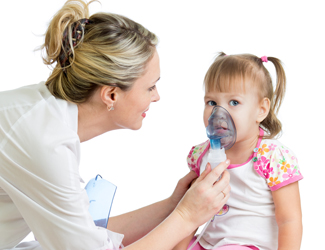
by Eric Brown | Sep 18, 2015 | Health, Indoor Air Quality, Mold and Asthma, Mold Facts, Mold Information, Mold Removal, Questions and Answers
Does Mold Cause Asthma?
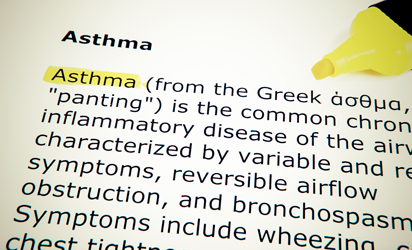
Does Mold Cause Asthma?
Asthma is a chronic respiratory inflammatory disease of the airways that makes it difficult to breathe and is caused by spasms in the bronchi of the lungs. The exact causes of asthma are not known, though research believes that the most common triggers are mold, allergies, tobacco smoke, environmental factors, genetics, and other factors.
The goal of this article is to explore the relationship between asthma and mold, citing recent research on the mold trigger and is divided up into the following sections:
- Asthma Statistics
- Asthma Statistics in Georgia
- Legal Evidence Citing Link Between Mold and Asthma
- Research Studies on Mold and Asthma
- The Impact of Mold Removal on Alleviating Asthma
Asthma Statistics

Asthma Statistics
Asthma affects 300 million people in the world and more than 22 million Americans. According to Michael Pinto, CEO, of Wonder Makers Environmental:
“Infants who are exposed to mold in their living environments have nearly a three times greater risk of becoming asthmatic than those who did not have extensive mold exposure in their first year of life.” (Medical Evidence that Connects Mold Exposure to Illness Keeps Piling Up)
Not surprisingly, six million American children suffer from asthma.
According to research by Crown Preservation, if the building has mold, respiratory conditions and asthma increased by up to 50%. Further, it is believed that 21% of the asthma cases or 4.6 million Americans suffer from asthma caused by dampness and mold. The health care costs for asthma in the United States are $3.5 billion each year.
The infographic below provides a macro view of asthma statistics in the United States and the rest of the world.

Asthma Statistics
Asthma Statistics in Georgia

Asthma Statistics in Georgia
According to the CDC, about 10% (more than 900,000 people) of the residents of Georgia suffer from asthma.
The average number of adults in the United States that have asthma is 13.5%; in Georgia, the percentage of adults that have asthma is below the national average and only 12.7%.
Statistically, however, asthma rates among children in Georgia are about 3% higher than the national average of 13.3%, sitting at around 16.1%.
Simply put, compared to the national average, more children in Georgia suffer from asthma.
Legal Evidence Citing Link Between Mold and Asthma

Legal Evidence Citing Link Between Mold and Asthma
In 2013, NBC Dateline produced a documentary called Breathless.
The key conclusion made by the documentary: rates of asthma in public housing managed by the New York City Housing Authority (NYCHA) was much higher among children then it was in private housing.
This revealing documentary furthered the cause of frustrated tentants, who sued NYCHA for violating the Americans With Disabilities Act.
The tenants core argument was that NYCHA was not respecting their health because they were not properly fixing moisture problems that was causing respiratory ailments and asthma. In short, NYCHA’s lack of action to address moisture problems was perpetuating the disability caused by asthma, particularly for children.
NYCHA eventually settled out of court and agreed that mold and moisture was a health threat. This recognition is very important because a public housing authority, that housed more than 400,000 tenants, finally agreed that mold causes respiratory ailments and asthma, demonstrating that they understood that moisture was the root cause of the problem.
Research Studies on Mold and Asthma

Research Studies on Mold and Asthma
Finish Mold and Asthma Study
In 2001, Dr. Maritta Kilpelainen, based out of the University of Turku in Finland, surveyed 10,000 students about the dampness of their homes. The students were asked to report back on the frequency of colds and other respiratory ailments.
Her survey study revealed the following:
- Students were twice as likely to have asthma if they found visible mold in their homes.
- The odds of having at least four colds per year increased by 50% if there was visible mold.
- There was a higher risk of lung infections, bronchitis and pneumonia, in students’ homes that had visible mold and water damage.
Cincinnati Mold and Asthma Study
Since Dr. Kilpelainen did not take actual swab samples of the mold or do air quality tests, her study is considered anecdotal and not conclusive; “mold minimizers” cite her study as more of a theory than actual proof that there is a link between mold and asthma.
In 2012, researchers in Cincinnati, led by Tiina Reponen, decided to explore the link between mold and asthma further by studying the effect of mold on children.
The researchers studied the effects of mold on about 300 children and found that there are three mold species harmful to children: Aspergillus ochraceus, Aspergillus unguis and Penicillium variabile. All three of these molds are prevalent in water damaged homes.
Reponen, co-author of the study, concluded:
“While it is known that mold is a risk factor for asthma, this is the first study that quantitatively measured mold and after adjusting for commonly known risk factors, found an association with asthma. Previously, other studies had shown qualitative or anecdotal associations.”
This conclusion clearly indicates that mold exposure in infancy can cause asthma, so it is very important that expectant mothers and families with small children avoid living in water damaged buildings.
Taiwan Mold and Asthma Study
The 2014 study out of Taiwan: Current asthma in schoolchildren is related to fungal spores in classrooms, adds further proof that mold does cause asthma.
Researchers studied children, ages 6 to 15, in 44 schools, and made the following conclusion:
“Classroom Aspergillus/Penicillium and basidiospores are significantly associated with childhood asthma and asthma with symptoms reduced on holidays or weekends (ASROH). Government health policy should explore environmental interventions for the elimination of fungal spores in classrooms to reduce the prevalence of childhood asthma.”
UK Mold and Asthma Study
In the same year, 2014, a study out of the UK made similar conclusions about mold and asthma. Dr. Richard Sharpe of the University of Exeter Medical School found that high levels of the fungal species Penicillium, Aspergillus, and Cladosporium poses a significant health risk to people with asthma, worsening the symptoms in both children and adults.
Sharpe and his team reviewed 17 studies that were done in eight different countries and concluded:
“Cladosporium, Alternaria, Aspergillus, and Penicillium species were found to be present in higher concentrations in homes of asthmatic participants. Exposure to Penicillium, Aspergillus, and Cladosporium species were found to be associated with increased risk of reporting asthma symptoms by a limited number of studies. The presence of Cladosporium, Alternaria, Aspergillus, and Penicillium species increased the exacerbation of current asthma symptoms by 36% to 48% compared with those exposed to lower concentrations of these fungi, as shown by using random-effect estimates. Studies were of medium quality and showed medium-high heterogeneity, but evidence concerning the specific role of fungal species was limited.” (Indoor fungal diversity and asthma: A meta-analysis and systematic review of risk factors)
Other conclusions from this study, included the following:
- Dampness and fungal contamination in the home has been consistently shown to increase the risk of asthma and the severity of its symptoms.
- Majority of the evidence reviewed focuses on the exacerbation of asthma symptoms, and few assess their role in the development of asthma.
- So far Aspergillus and Penicillium species have already been linked to an increase in the risk of asthma development in children, but we know little about the effects of the other species we considered.
- Dampness is one of the major factors affecting the growth of mold inside homes, a problem which has been on the rise as aging houses are sealed and retrofitted with new energy efficient technology. We currently know very little about how people’s living habits can contribute to indoor air quality, and ultimately affect their health. This study highlights the need for homes to have adequate heating, ventilation and home maintenance, all factors that will help to reduce the presence of mold and its effects on asthma symptoms.
The Impact of Mold Removal in Alleviating Asthma
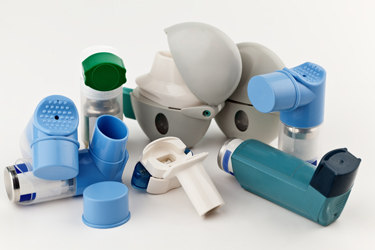
The Impact of Mold Removal in Alleviating Asthma
The research studies cite both quantitative and qualitative evidence correlating a strong link between mold and asthma.
From an economic stand point, the health care costs related to asthma are $3.5 billion dollars. Much of the treatment focuses on the use of medications, a band aid solution because drugs and inhalers may not be addressing the root cause, mold.
Will the health care community and insurance providers finally begin acknowledging the positive impact that mold remediation will have? Michael Pinto, CEO of Wonder Makers, believes there is a strong argument for the environmental causes of asthma to one day be addressed by health insurance providers that see the benefits of mold removal as an asthma preventative measure.
Failure to address the cause negatively impacts the sufferer’s health and also has a significant economic cost from a health care standpoint and lost productivity.
Considering the health costs of asthma, it makes logical sense for the real cause of asthma, i.e. mold to be addressed and removed, particularly if there are children in the home.
“It’s proof of common sense that you want to take care of mold in the home. It’s just proving that if you don’t do that, your kids are more likely to develop asthma.” (Gary Steven, an allergist at the Allergy, Asthma & Sinus Center in Milwaukee)
Furthering the argument to remove mold for asthma relief, a study published in the scientific journal Thorax concluded that mold remediation – the removal of visible mold – improved respiratory illnesses:
- Asthma and rhinitis symptoms and the use of medications to treat them were reduced in patients who took part in a randomized controlled trial to see if removing visible household mold would relieve their symptoms.
- After a year the intervention group (those whose mold was removed) reduced their use of medications by 22 percent while the controls reduced their medications by 16 percent.
- The intervention group also reported about 24 percent net improvement in rhinitis and rhino conjunctivitis symptoms than the control group.
- The intervention group also showed an improvement in wheezing that affected their activities like sleeping and speaking (31 percent vs. 7 percent improvement reported by the control group).
If you suffer from asthma, one of the most important steps that you can take to improve your condition is to determine if you have mold in your home. Consider getting the air quality of your home tested to determine if the trigger is mold because the short term cost of removing the mold could net long term health benefits and savings in health costs as well.
Mold B Gone is here to help and committed to serving mold sensitized residents and asthma sufferers. If you suspect that mold is making you sick, call us, 678-697-6267 or contact Mold B Gone for further assistance. Our goal is to help you live a healthier and happy life. Most importantly, we truly empathize with your situation and are committed to helping you and guarantee our services.
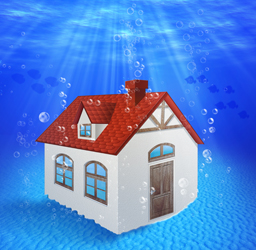
by Eric Brown | Sep 11, 2015 | Health, Indoor Air Quality, Mold Facts, Mold Information, Mold Remediation, Mold Removal, Questions and Answers, Water Damage Restoration
Beware Of These Top Three Flooding Health Hazards!

Beware Of These Top Three Flooding Health Hazards!
Our previous articles outlined the top three facts about water damage restoration and three steps to reduce flood damage. The purpose of this article is explain the top 3 health hazards created by water damage.
The primary goal of water damage restoration is to help you get back to your normal routine by restoring your property to its pre-flood condition.
The secondary goal of restoration professionals it to minimize these three water damage health hazards:
1. Mold Growth
2. Bacteria Growth
3. Structural Damage
Hazard #1: Mold Growth
Where there is moisture, there will be mold. Unfortunately, if you experience water damage from a flood, the issue of mold is a bigger concern because there is so much moisture to promote mold growth. Mold is a problem because it can cause illness and this is the primary reason you want to prevent mold from growing.
Research done by Dr. Harriet Ammann, a mycotoxin expert, shows that mold exposure can damage the bodies systems:
- Vascular: blood vessel fragility, hemorrhage from tissues or lungs
- Digestive: diarrhea, vomiting, hemorrhage, liver damage, fibrosis and necrosis
- Respiratory: trouble breathing, bleeding from lungs
- Neurological: tremors, loss of coordination, headaches, depression, multiple sclerosis
- Skin: rashes, burning, sloughing, photosensitivity
- Reproductive: infertility, changes in reproductive cycles
- Immune: Immunosuppression
Interviews with mold survivors shows that chronic mold exposure can lead to mycotoxicosis. The negative impact of mold on the health is growing and has been well documented most recently in articles written by the CEO of Wonder Makers Environmental, Michael Pinto in three key articles:
1. Medical Evidence that Connects Mold Exposure to Illness Keeps Piling Up
2. The Answer to the Mold Illness Questions Is: All of the Above
3. Do People Really Get Sick From a Little Mold in Their House?
One of the keys to preventing mold growth is to ensure that the water damaged area is completely dry before any reconstruction occurs. Unfortunately, this does not occur all the time, particularly when you hire inexperienced restoration contractors. To avoid this from happening, be sure that you pre-qualify your contractor and do your due diligence, review this article to learn more about the pre-qualifying process.
Hazard #2: Bacteria Growth
As explained in a previous article, one of the main priorities of a restoration contractor is to determine the category hazard of the water, ie. is it category 1, 2, or 3. This is very important because the worse type of water is black water which can cause some serious health conditions: gastroenteritis; Weil’s disease also known as Leptospirosis; Hepatitis; acute respiratory illnesses; and tetanus.
The number one rule about water damage is the longer you wait, the worse it will get. This is particularly true when you are trying to prevent hazardous bacteria from growing because category 1 water can turn into category 2 water and eventually category 3 water, which is the most toxic and causes many illnesses.
Hazard #3: Structural Damage
Water damage can impact the structural integrity of a property because large amounts of water can degrade the strength of the materials.
This is particularly true when mold begins to grow because mold feeds on the material and will continue to feed until it has finished consuming the material. This is the reason wood will rot when mold contaminates it.
As the wood is consumed and begins to rot, this will negatively impact the structural integrity of the home creating a health hazard, not to mention rotting wood will reduce the value of the property as well.
How Do I Protect My Family and Property If My Home Is Flooded?
Hiring an experienced professional is the most important step to protecting the health and well-being of your family. Experienced restoration professionals, like Mold B Gone, will not advise you to rush into the reconstruction phase of your restoration project because they understand that the key to preventing mold is to ensure that the flood affected area is completely dry.
Reconstruction after restoration is essential to restoring the daily routine of your life. However, if the property is reconstructed and moisture is still present, this will create long term headaches and costs because mold will grow. To avoid mold growth, patience is the key to allow the area to dry completely.
You will know that reconstruction has occurred to soon if you begin to have condensation on your windows; smell musty odors; and find other clues that moisture is present including water stains, new or increased allergy symptoms, cracked or peeling paint, loose drywall tape or wall paper, rusty metal, and drawers or doors that stick.
If you do have a mold problem, then please avoid fly-by-night mold removal contractors that lack experience and credentials. They may present you with cheaper mold removal estimates, particularly if they tell you they can remediate your mold with ozone, do all the clean up with bleach, or simply run a machine that fogs and kills the mold.
To avoid the pitfalls of hiring fly-by-night operators who do not offer a guarantee and lack experience, hire a professional like Mold B Gone that has years of experience, specialized training, equipment, and a solid reputation in the community. Experienced contractors will provide you with a recovery plan of action that outlines what will be done to address the water damage and prevent mold growth. The plan will outline the following for you:
- An assessment of the category of water and extent of damage;
- A scope of work that will assess structural issues based on the class of damage;
- Content removal and cleaning plan;
- Steps required to remove excess water;
- A drying and monitoring strategy using air movers and dehumidifers; and
- A sanitizing plan to ensure a healthy environment.
Furthermore, we do not recommend that you begin the cleanup or tear up yourself, particularly because of the potential hazards that asbestos may cause if asbestos containing materials become air borne. However, if you have contacted a professional and are waiting for them to arrive and must begin some of the clean up yourself, take the following precautions:
- Have the area cleared by emergency workers if you have standing water in an area where fuse boxes and/or electrical circuitry is submerged before attempting to pump out the water.
- Turn off your gas line.
- Wear an N95 or N100 respirator mask, available at most hardware and medical supply stores.
- Wear rubber boots and puncture-resistant gloves. Ideally, don a polypropylene coverall.
- Be sure to carefully dry any belongings you want to try to save.
- Items that should be thrown out, particularly if they have been underwater include the following: carpet, carpet padding, and rugs; upholstered furniture; computers, microwaves, window A/C units, or any appliances that have fans; papers and books; and food items, including canned foods if they were in contact with flood waters.
The primary purpose of water damage restoration is to restore the property to pre-loss condition. Before the reconstruction phase of the project begins, we recommend that you consult with an environmental consultant to do post remediation tests, particularly if there was any mold, category 2 or 3 water present. This is an important step before reconstruction because it will verify that the water damage restoration was done properly.
If you have questions, call us, 678-697-6267 or use our online form. We look forward to serving you!
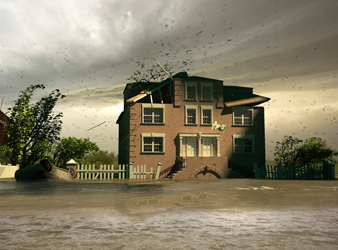
by Eric Brown | Sep 6, 2015 | Health, Indoor Air Quality, Mold Facts, Mold Information, Water Damage Restoration
3 Actions Required To Minimize Flood Damage & Mold

3 Actions Required To Minimize Flood Damage & Mold
All life–plants, animals, and humans–is composed of cells, which require water to function. In fact, cells can not survive without water. The human body, which is made up of 50% to 70% water, and it’s trillions of cells require water to function properly.
Water is a life force, without it we can not survive; but it can also be very destructive causing disease, property damage, and long term health issues.
Mold is a fungus and also has cells, but can not survive without water. Water and moisture is the key ingredient mold needs to grow; unlike a plant which can make its own food using photosynthesis, mold is unable to. The three ingredients mold needs to thrive and grow include the following:
1. A food source, which is material high in cellulose content: paper, wood, drywall, wallpaper, carpet, ceiling tiles, dust, and dirt.
2. The ideal temperature, between 5 degrees and 38 degrees.
3. Of course, as mentioned above, water and moisture. Mold can not proliferate and thrive without water. Hence, the best defense against mold is to minimize moisture.
Mold is everywhere. It has a purpose in our eco-system, ie. to break down dead organic matter from animals and plants. This is the reason that mold is often referred to as “nature’s recycler”. Since mold is everywhere, we are constantly exposed to it and inhale mold spores everyday. If the spore count is relatively low, as it is in the outdoor environment, it does not cause too many health concerns.
In an indoor environment, however, with less ventilation and fresh air, mold will cause problems because the concentration of spores will increase resulting in unhealthy air. In short, mold causes sickness when it grows indoors because the spore count increases as mold reproduces meaning larger concentrations of spores are inhaled.
The other major problem caused by mold relates to structural damage. Like a cancer or parasite, once mold begins to grow it will continue to feed on its host leading to dry rot of the wood, buckling foundations, and other structural damage, like possibly a collapsing roof.
In order to minimize flood damage you need to take immediate action to prevent the onset of mold.
Action Step #1: Water and Electricity Do Not Mix
Safety is the first major concern. If you have flood water entering your home or business, you need to take immediate action to avoid electrical shock. This means you need to remove any extension cords that are under water, turn off the breakers in flooded areas, and most importantly, if you need assistance, call your electrical utility for help.
Action Step #2: Immediate Clean Up Is Essential
Contact Mold B Gone immediately because we are professionals and have the protective gear, equipment, and experience to take action.
Mold needs water to grow so it is absolutely imperative that the clean up process starts right away. Preventing mold growth is accomplished by removing all of the water and then deploying drying equipment, air movers, and dehumidifiers. Once the water is out, and much of the excess moisture is removed, the next step is to remove all of the porous contaminated material such as drywall, wet carpet, etc. and dispose of it. This is particularly important if there is any category 3 water in the home. Once the flooded area is properly gutted and the contaminated material is disposed of, it is important that the area is dry and disinfected before any reconstruction begins.
Sometimes, during a major storm, when many households are affected by flooding, restoration companies can become overwhelmed with calls. While they are waiting, many home owners will begin the clean up process themselves. If you decide to begin the clean up process, we strongly suggest that you use rubber gloves, boots, protective clothing, and a respirator.
Action Step #3: Call Your Insurance Adjuster
Dealing with a flood can be stressful and overwhelming, but rest assured if you implement the first two action steps and then call your insurance adjuster to begin the claim process, everything will be fine. Remember, the whole process of water damage restoration is to restore your home to pre-flood condition.
Call (470)545-4467 or send an e-mail. Mold B Gone has been serving residents of Atlanta since 2009 and have the experience to manage any water damage situation, big or small. Plus, we guarantee all of our service.
Three Steps to Reduce #Flood Damage: A flooded home or business is always a stressful situation. This blog provides you with the 3 steps required to reduce flood damage and most importantly, #mold!
Posted by Mold-B-Gone Remediation, LLC on Sunday, September 6, 2015
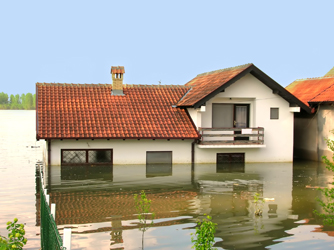
by Eric Brown | Sep 4, 2015 | Health, Indoor Air Quality, Mold Facts, Mold Information, Questions and Answers, Water Damage Restoration
Fact #1: The First 24 to 48 Hours Are Critical

Fact #1: The First 24 to 48 Hours Are Critical
If your home is flooded, the first 24 to 48 hours are critical because this is all the time mold and other microorganisms needs to begin growing and thriving.
Five conditions are required by fungi and bacteria to germinate, grow, amplify, and disseminate:
- Organic food source, especially cellulose (e.g., paper, wood), which are found in abundance in construction materials.
- Moisture, even high humidity (67% RH plus)
- Moderate temperature – 68-86°F/20-30°C
- Stagnant air
- Time – several hours to several days.
Water damage restoration has two main goals. First, to restore the home to pre-loss condition. Second, to prevent the onset of mold and other microorganisms.
In order to accomplish these goals, you need to take action immediately. These are the action steps.
- Contact a restoration contractor immediately to begin the removal of excess water. Once the excess water is removed, the restoration contractor can deploy drying equipment, dehumidifiers, and air movers, which will be effective at preventing mold growth.
- Contact your insurance company to begin the claims process.
Fact #2: Mold Growth Is Not The Only Concern

Fact #2: Mold Growth Is Not The Only Concern
The other reason time is not on your side relates to the bio-hazard level of the water. There are three hazard levels.
Category 1 Water, also known as clean water, is not considered hazardous because it originated directly from a sanitary source such as a broker water supply line, melting ice or snow, rain water, and/or uncontaminated tub or sink water.
Category 2 Water, also known as gray water, is a health concern because the water originated from a contaminated source such as discharge from dishwashers or washing machines, toilet bowl overflows (urine, no feces), seepage due to hydrostatic pressure, and sump pump failures. Gray water has bacteria present that carries nutrients for microorgnisms that cause sickness and discomfort when consumed.
Category 3 Water, also known as black water, is the worst level of water contamination because the water originated from sewage, rising flood water from rivers and streams, and ground surface water flowing horizontally into the home. Black water can cause death and sickness because it can be contaminated with E. Coli; Acanthamoeba; Salmonella; Helicobacter pylori; Leptospira; Cryptosporidium; Giardia; Hepatitis A Virus; Clostridium Tetani; and Adenoviridae. Illnesses caused by black water include gastroenteritis; Weil’s disease also known as Leptospirosis; Hepatitis; acute respiratory illnesses; and tetanus.
The problem with standing flood water is that the risk of bio-hazard increases as time passes. In short, after two to three days, clean water can turn to gray water, and eventually black water as bacteria and pathogens begin to grow and proliferate.
Fact #3: Water Damage Restoration Should Be Done By Professionals

Fact #3: Water Damage Restoration Should Be Done By Professionals
The immediate inclination of most property home owners is to begin the clean up process themselves and if you do, please take precautions because micro-organisms enter the body through direct contact or by breathing in contaminants. For this reason, always wear protective clothing, rubber boots, gloves, eye, and respiratory protection.
In order to avoid long term health, structural, and mold concerns, we recommend the services of a professional restoration company that has the experience and training to restore your home to pre-loss condition.
Well trained professionals understand that not all water damage restoration projects are the same. When they are formulating their action plan also known as a scope of work, they will assess the hazard level of the water, but will also determine the extent of destruction to create a sensible plan of action.
There are four distinct classes of destruction:
- Class 1 Destruction: The lowest and easiest to deal with, this has a slow evaporation rate. Only part of a room or area was affected, there is little or no wet carpet, and the moisture has only affected materials with a low permeance rate, such as plywood or concrete.
- Class 2 Destruction: With a fast evaporation rate, this level affects an entire room, carpeting, or cushioning, the wetness has wicked up the walls at least 12”, and there is moisture remaining in structural materials.
- Class 3 Destruction: This class has the fastest evaporation rate, and ceilings, walls, insulation, carpet and sub-floors are all saturated. The liquid may have come from overhead.
- Class 4 Destruction: This class is labeled as a specialty drying situations, which means there has been enough liquid and time to saturate materials with very low permeance, such as hardwood, brick, or stone.
Other reasons you should hire a professional include the following:
- Trained professionals have specialized equipment to pump out excess water, commercial grade dehumidifiers and air movers.
- Experienced professionals have the knowledge to properly determine the class of destruction and category of water to put together a scope of work (ie. plan of action).
- Ability to assess structural issues caused by the water damage, which could have long term safety and property value consequences if not fixed properly.
- Advise you on what contents can be cleaned and what needs to be thrown out.
- Create a drying and monitoring strategy using air movers and dehumidifiers.
- Create a sanitizing plan to ensure a healthy living environment.
As a final note, in addition to using the services of a professional restoration company, we also recommend that you hire a third party environmental firm to perform post-remediation verification tests on the air quality to assess the mold spore count and sewage contamination tests if the flood water had category 3 water. These tests should be performed before any reconstruction occurs because it will provide you with verification that the water damage restoration was done properly. There is a cost to post-remediation verification, but it is well worth the investment for peace of mind that the work was done properly. Long term, this final step could save you thousands of dollars and future headaches because if any moisture or bacteria is present after the rebuild is complete, much of the reconstruction will eventually need to be torn down, particularly if there is mold.
Questions? We are here to help. Call us, 678-697-6267 or send us an e-mail.

by Eric Brown | Aug 30, 2015 | Health, Indoor Air Quality, Mold Facts, Mold Information, Mold Inspection, Mold Remediation, Mold Removal, Questions and Answers
Are You Mold Sensitized?
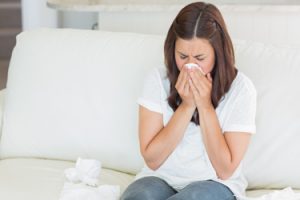
Are You Mold Sensitized?
In March of this year, Wonder Makers Environmental, based in Michigan, launched www.moldsensitized.com with the goal of educating consumers, contractors, and health professionals on the health concerns caused by mold. The website’s goal is to be the ultimate resource of mold information and contains many articles written by the CEO, Michael Pinto.
Since launching the website, many mold sensitized individuals have been interviewed. Five key lessons can be learned from these interviews.
- There is a lack of appreciation in the medical community of the impact mold can have on certain individuals.
- Symptoms from mold sickness are broad, leading to multiple mis-diagnosis of patients by many doctors.
- Mold sensitized individuals seek help from multiple medical practitioners because their illnesses continue.
- The mold sensitized individual eventually learns that mold has been the cause of their sickness.
- Because traditional remediation approaches do not adequately address their sensitivities, mold sensitized individuals often are forced to seek alternative shelters.
According to experts featured on the MOLDY documentary, 28 percent of the population have genes that make them highly susceptible to mold-related illness. Putting this into perspective, and based on the population of the metro Atlanta area, there are approximately 1.5 residents susceptible to mold sickness.
According to Dr. Richie Shoemaker, a physician and expert in the field of biotoxin-related illness and author of the book Surviving Mold, the most common condition associated with mold illness is Chronic Inflammatory Syndrome.
What Is Chronic Inflammatory Syndrome?
Chronic Inflammatory Response Syndrome (CIRS), also known as Sick Building Syndrome (SBS), is a combination of illnesses or aliments that are in direct relation with an individual’s place of work or home environment:
An acute and chronic, systemic inflammatory response syndrome acquired following exposure to the interior environment of a water-damaged building with resident toxigenic organisms, including, but not limited to fungi, bacteria, actinomycetes and mycobacteria as well as inflammagens such as endotoxins, beta glucans, hemolysins, proteinases, mannans, c-type lectins and possibly spirocyclic drimanes, plus volatile ogranic compounds.
The term Sick Building Syndrome was first coined by the World Health Organization in the 1980s and it is believed that it is caused by poor air quality caused by water damage.
According to Shoemaker:
This illness happens after exposure to the interior environment of a Water-Damaged Building (WDB). There are many ways buildings become home to a toxic mix of microbes, fragments of microbes, and harmful chemicals. Buildings can host fungi, bacteria, mycobacteria, and actinomycetes as a result of construction defects like inappropriate ventilation; faulty construction of crawl spaces or inadequate building design; flat roofs or fake stucco cladding without adequate caulking; incomplete basements exposed to saturated ground water conditions; or not correcting water leaks.
According to Shoemaker, 25% of the population has a genetic pre-disposition to CIRS; women tend to report more symptoms than men:
Genes made them prime targets for an assault by their own innate immune systems….exposure to the interior environment of a Water-Damaged Building (WDB), [causes] an innate immune response that is going haywire.
Individuals exposed to the toxins in a water damaged building suffer from chronic illness because their bodies are trying to eliminate the foreign substances that stay in the body resulting in chronic inflammation and multiple symptoms. In fact, one of the reasons that it is so difficult to diagnose CIRS is due to the fact that there are 37 symptoms: fatigue; weakness; aches; muscle cramps; unusual pain; ice pick pain; headache; light sensitivity; red eyes; blurred vision; tearing; sinus problems; cough; shortness of breath; abdominal pain; diarrhea; joint pain; morning stiffness; memory issues; focus/concentration issues; word recollection issues; decreased learning of new knowledge; confusion; disorientation; skin sensitivity; mood swings; appetite swings; sweats (especially night sweats); temperature regulation or dysregulation problems; excessive thirst; increased urination; static shocks; numbness; tingling; vertigo; metallic taste; and tremors.
Because of the large number of symptoms and different combinations that a patient can have, CIRS is difficult to diagnose.
If you have been suffering from ill-health for an extended period of time and the treatments that you are prescribed do not seem to help, then here are some recommended action steps.
- Listen to your body. If you are feeling sick and despite under-going multiple treatments still continue to feel sick, then do not give up on trying to find out what the cause is.
- Research mold sickness. The website, www.moldsensitized.com, has a significant amount of information on mold and it’s impact on health and is constantly updating the site with new information on its blog. In particular, you may want to read these articles: Medical Evidence that Connects Mold Exposure to Illness Keeps Piling Up;
Do People Really Get Sick From a Little Mold in Their House?;
What is Stachybotrys Mold?;
The Mystery of Mycotoxins in Mold Contamination;
The WHO on Mold;
TOP 10 Questions and Answers About Water-Damaged Buildings;
- Review the experiences of mold survivors to gain greater insight into mold sickness. One of the primary reasons you want to do this is so that you will have some further evidence that you can take to your preferred medical practitioner.
- Continue to educate yourself. Because of the lack of knowledge in the mainstream medical community, you need to take a lead role in determining whether mold is making you sick.
- Finally, if after all your research, you think that mold is the problem, then verify the existence of mold in your home by investing in a mold inspection and air quality test.
What Should I Do If I Am Diagnosed With Mold Sickness?
If you suspect that you are sick because of mold, then the next step is to find a Doctor that has knowledge about mold sickness. To find listings of environmental doctors throughout the world, click here.
Two Steps To Recovery!
Once you are diagnosed, there are two distinct steps to your recovery.
Seek Medical Treatment
Medical treatment is designed to detox your body and allow your immune system to recover and begin to regain its strength. The detox strategy will be prescribed by your physician who will likely recommend that you remove yourself from the property that has been making you sick until it is safe to occupy again.
Remediate Your Home
The process of removing mold from your home and ensuring that you can move back in without experiencing further sickness is the long term solution to health recovery.
In the past, mold sensitized individuals were forced to abandon their primary residences even after remediation because contractors did not understand the Big Picture of how the remediation and cleaning activities have to be coordinated with the medical and building maintenance aspects of the project.
If you want to invest into mold remediation, we recommend that you hire a contractor that has invested in the remediation for sensitized individuals training. Our team are currently the only mold remediation company in Atlanta that have graduated from this course. We work closely with the other graduate, Healthy Air, for all for all of our pre-testing and post testing on all homes and businesses we perform remediation work on. In addition, Mold B Gone specializes in whole house and room sanitizing to reduce the amount of bacteria and pathogens in your home allowing you to breath easier and healthier.
Mold B Gone offers mold sensitized individuals these five key benefits:
- Commitment to completing the job correctly the first time, with the understanding that our goal is provide you with a safe place to live or work because our team knows that our work practices can impact your health.
- Clear understanding that the environmental portion of projects with sensitized individuals has many facets (i.e., source removal, content cleaning, HVAC decontamination, whole structure cleaning, building performance improvements, etc.) and will provide services only in those areas where they are qualified.
- Clear understanding that your project requires procedures that are more protective than the current standard of care for the mold remediation industry.
- Commitment to specific project endpoints that have been designed for sensitized individuals (endpoints that incorporate the latest health/science data).
- Long term cost savings, peace of mind, and less anxiety because we will be familiar with situations like yours and the most effective techniques for this stringent remediation.
Mold B Gone is here to help and committed to serving mold sensitized individuals. If you suspect that mold is making you sick, call us, 678-697-6267 or contact us via e-mail for further assistance. Our goal is to help you live a healthier and happy life. Most importantly, we truly empathize with your situation and are committed to helping you and guarantee our services.
How Do I Know If Mold Is #Making Me Sick? Wondering if you are sensitive to mold? This article explains how to determine if you are mold sensitized, seeking treatment, and the next two steps to health!
Posted by Mold-B-Gone Remediation, LLC on Sunday, August 30, 2015
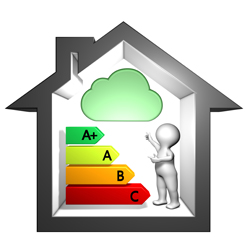
by Eric Brown | Aug 28, 2015 | Health, Indoor Air Quality, Mold Facts, Mold Information, Questions and Answers
Why Should I Have An Indoor Air Quality Test?

Why Should I Have An Indoor Air Quality Test?
Most people are unaware that their indoor air could be polluted. Indeed, today, we spend 90% of our time indoors, relying on our HVAC systems to create a constant stream of healthy air. Our health is dependent on the the quality of the air we breathe. The problem with indoor air pollution is that is not visible to the naked eye, meaning the quality of your air could be making you sick without you even knowing it. Despite your efforts to maintain a clean and healthy household, you still may be getting sick because of indoor pollutants.
Symptoms of Poor Indoor Air Quality
Our bodies are designed to rid ourselves of toxins and pollutants, this is one of the reasons that we get sick and experience colds and flus. However, if you or other’s in your family seem to always be sick, the air you are breathing could be the cause.
Do you often experience the following health issues?
- Headaches;
- Respiratory issues such as asthma, sinusitis, and other respiratory infections such as bronchitis and pneumonia;
- Excessive coughing and/or a breathless feeling;
- Dizziness, confusion, malaise, trouble concentrating, and other cognitive disorders;
- Skin irritation, itchiness, and rashes;
- Ear and/or eye infections
If you consistently experience these symptoms, the air you are breathing could be the cause.
A simple test is to record how you feel when you are away from your home or business. If you feel sick when you are in your home or business, but feel much better when you are away, then this could be a clue that the air is making you sick.
What Causes Poor Indoor Air Quality?
Contaminated air can seep in from the outside or could be caused by indoor sources like construction materials, consumer products, mold, insects, and pets. The effect of pollutants is compounded by poor ventilation which allows pollutants to accumulate to unhealthy levels.
Poor indoor air quality in your home or business could also be caused by factors such as the building design, heating/cooling design, and/or previous water damage.
Other potential causes of poor indoor air quality include the following:
- High humidity levels.
- Airborne dust problems from poorly maintained ducts or other sources in the building.
- Volatile Organic Compounds (VOC’s) which are chemicals released by building materials and furniture.
- Inadequate ventilation caused by mechanical or building issues.
- Combustion problems leading to high levels of Carbon Monoxide (CO) or Carbon Dioxide (CO2).
- Sewer gas leakages, leading to odors.
- Recurring water damage, causing growth of mold and other bacteria.
- Radon, the second highest cause of lung cancer, most likely seeping through the foundation in your basement.
- Radioactive marble or granite in the home.
- Air borne asbestos, a cause of mesothelioma.
What Should I Do?
The easiest way to determine if the air you are breathing is making you sick is to call an indoor air quality specialist to test the air. Indoor air quality professionals have specialized equipment that can test the air for radon, mold spores, and other pollutants.
At Mold B Gone, our Indoor Air Quality testing uses OSHA, NIOSH, and EPA testing procedures to investigate indoor air quality complaints. We can test for 100s of compounds, including gases, chemicals, dust, and biological samples to give you a profile of your air.
One of the services we specialize in is mold testing, which is done by taking air samples from both inside and outside the building so the spore numbers can be compared with each other. If the testing shows high mold spore counts, then a mold inspection and mold removal plan will be provided to you.
In order to ensure the most accurate and reliable results, Mold B Gone utilizes specialized calibration instruments and sample handling procedures. In addition, controlled samples are compared with yours to ensure the most accurate results possible. We use Third Party Labs to analyze the results of all of the samples we take to provide you with a detailed air quality report and recommendations.
If you are concerned that you may have indoor air quality issues and have questions, call 678-697-6267 or send us an e-mail.
What Is Indoor Air Quality Testing? If you or someone in your family suffers more frequently from colds or flus and you are not sure why, the cause could be poor indoor air quality. Learn more!
Posted by Mold-B-Gone Remediation, LLC on Friday, August 28, 2015




















